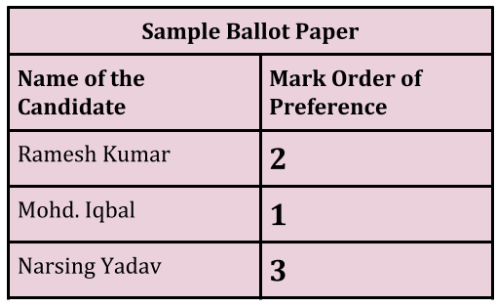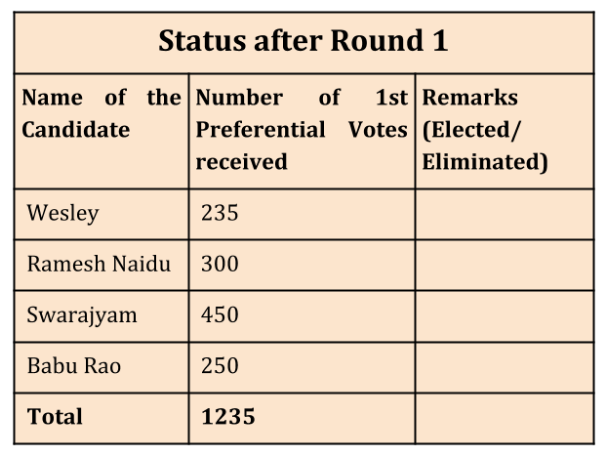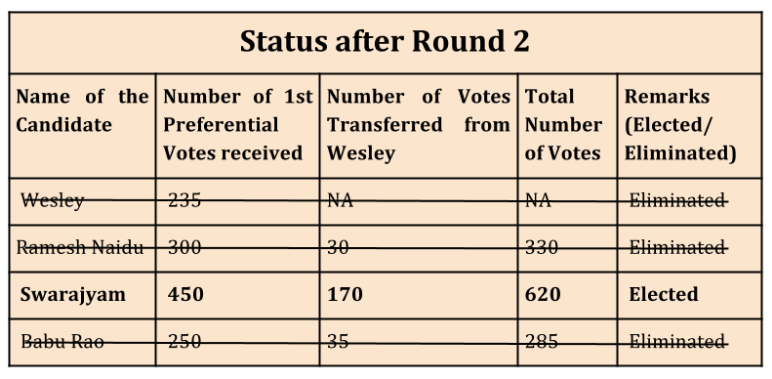[orc]After a nail biting finish to the Rajya Sabha elections in Gujarat, everyone is talking about the quota of votes. Quota is the minimum number of votes required to be elected. The math of the Rajya Sabha election is complex.
The Upper House of parliament is called the Rajya Sabha (RS). It is also known as the ‘Council of States’ since the members of Rajya Sabha are elected by the legislators of state assemblies. Each state has a fixed number of RS seats and 1/3rd of them come up for election every 2 years. Article 80 of the constitution stipulates the maximum size of the house. The number of elected RS members from the States & UTs cannot be more than 238. Apart from the elected members, 12 members can be nominated by the President of India. Currently there are 233 elected members and 12 nominated members.
The Election Process
The system of election of members to the Rajya Sabha is by proportional representation by means of the single transferable vote (STV). The STV system is similar to the one followed in the election to the President of India and members of the legislative council in states. The vote is transferred from one candidate to another in any of the two situations mentioned below.
- When a candidate obtains more than what is required for his success and therefore has an unnecessary surplus
- When a candidate polls so few votes that he has absolutely no chance and therefore the votes nominating him are liable to be wasted
In STV, each voter ranks the list of candidates in order of preference. In the ballot paper, they place a ‘1’ beside their most preferred candidate, a ‘2’ beside their second most preferred, and so on. The completed ballot paper therefore contains the candidates in the order of preference as marked by the voter. 
The Quota
The minimum number of valid votes required for a candidate to be declared elected is called the quota. The quota calculation depends on the number of seats to be filled.
Scenario 1:
At an election where only one seat is to be filled, every ballot paper is deemed to be of the value of one and the quota is calculated by adding the values credited to all the candidates and dividing the total by two and adding one to the quotient, ignoring the remainder, if any, and the resulting number is the quota. It has to be

For instance, if the total number of votes polled is 65, then the quota is
In this case, for any candidate to be elected, he has to secure a minimum of 33 first preferential votes to be elected in the first round.
Scenario 2:
At an election where more than one seat is to be filled, every ballot paper is deemed to be of the value of 100 and the quota is determined by adding the values credited to all the candidates and dividing the total by a number which exceeds by one the number of vacancies to be filled and adding one to the quotient ignoring the remainder, if any, and the resulting number is the quota.
For instance, if 3 candidates are to be elected and the total number of voters who participated in the poll is 176, the quota is

In this case, a candidate has to get a minimum of 4401 votes or first preferential vote of 45 voters to be elected in the first round.
The Counting Process
If none of the candidates get the required quota of first preference votes, then a process of vote transfer takes place, successively eliminating those who get the least number of first preferential votes.
For instance, in an election to fill one vacancy, there are four candidates in the fray and the total number of valid votes is 1235. According to the STV formula, the quota of first preference votes required for victory is 618 ignoring the remainder.

In the first round, any candidate securing a minimum of 618 first preferential votes gets elected. In this example, none of the four candidates secures the quota. Hence there is no winner after the first round and the process of vote transfer takes place. At the same time, the candidate with the least number of first preference votes is eliminated. Since Wesley is the candidate with the least first preference votes, he is eliminated. When he is eliminated, his votes are transferred to the other three candidates. The transfer takes place in proportion of the 2nd preference votes received by the other three candidates in those ballots with a first preference vote to Wesley. In this example, out of the 235 ballots with a first preference votes to Wesley, 170 of them had Swarajyam as 2nd preference, 35 of them had Babu Rao as the 2nd preference and the remaining 30 had Ramesh Naidu as the 2nd Preference. Hence the transfer takes place in that proportion.
Since Wesley is the candidate with the least first preference votes, he is eliminated. When he is eliminated, his votes are transferred to the other three candidates. The transfer takes place in proportion of the 2nd preference votes received by the other three candidates in those ballots with a first preference vote to Wesley. In this example, out of the 235 ballots with a first preference votes to Wesley, 170 of them had Swarajyam as 2nd preference, 35 of them had Babu Rao as the 2nd preference and the remaining 30 had Ramesh Naidu as the 2nd Preference. Hence the transfer takes place in that proportion.
After round two (after transfer of votes), Swarajyam has 620 votes, which is two more than the required quota. Hence she is declared elected and the remaining three are eliminated. This process of transfer continues until a clear winner is found. Sometimes, the process can run into multiple rounds to find the winner.
The case of Ahmed Patel’s election
In the biennial elections to 3 seats of Rajya Sabha from Gujarat, the total number of voters who participated in the election was 176. Since the election is to more than one seat, the value of each vote is 100. Hence the quota for any candidate to get elected is the following.
So every candidate had to get the first preferential vote of a minimum of 45 voters to be elected in the first round. But since the Election Commission rejected the votes of two Congress MLAs, the number of voters came down to 174 and the quota came down to 4351

After the rejection of two votes, each candidate had to get the first preferential vote of a minimum of 44 voters to be elected in the first round. Since Ahmed Patel secured the first preferential votes of 44 MLAs, he secured a total of 4400 votes and was declared elected in the first round. If the EC had not rejected the votes of two Congress MLAs, the counting would have gone into the second round. The contest would have been a closer one and Ahmed Patel would have still won as explained in this story in The Hindu.



1 Comment
Bed goverment result all filled